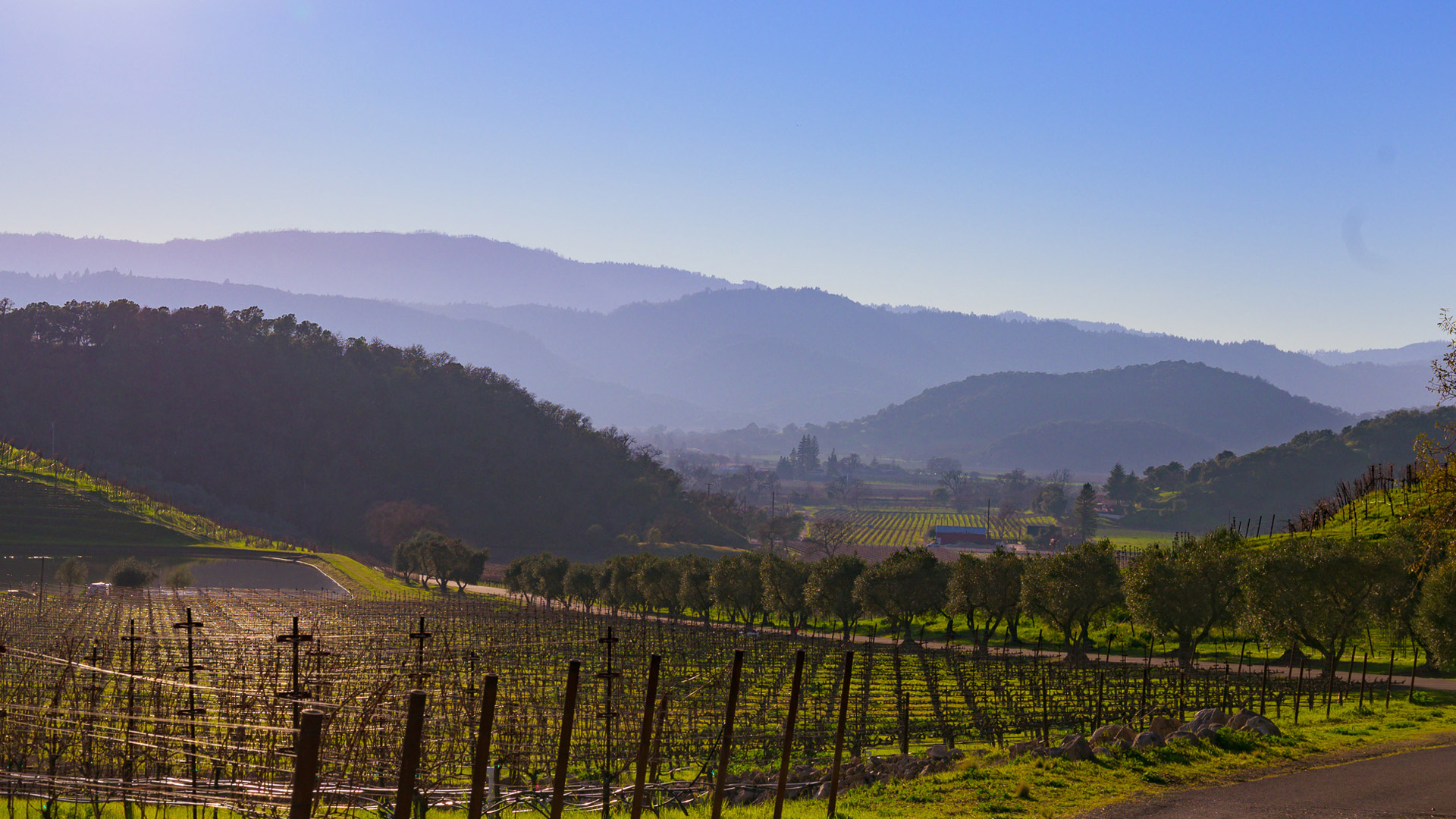Coombsville
Coombsville wines to know
Since becoming an official American Viticulture Area in 2011, Coombsville has taken off with its potential for wines with elegance.
What does that mean? Well, the valley's bay influence means it's a lot cooler than most of the rest of Napa Valley which means longer hang time and slower ripening. The result is wines with fresher fruit flavors (like floral "blueberry" notes in the Cabernet), more acidity and tartness, and lower potential alcohol.
You'll find Cabernet Sauvignon and the full spectrum of Bordeaux varieties here including Merlot, Petit Verdot, Cabernet Franc, Carménère, and Malbec. Additionally, due to its proximity to the bay, there's great Sauvignon Blanc, Chardonnay, and even rosé!
The organic and sustainably farmed vineyards at Tournesol Wines
A few estate wineries to note in Coombsville
Farella winery claims the first Cabernet from the region from its sustainable, no-till vineyards.
Azur brings enthusiasm for Provence-style rosé into the region.
Faust and Meteor Vineyards have both managed to delight a couple of well-known critics with their 100% Cabernet Sauvignon.
Palmaz boasts biodynamically farmed vineyards that enlist technical GIS (geographic information systems) data to optimize the grape growing each vintage.
Coombsville terroir
The keen highlight of terroir in Coombsville is the marine layer of clouds and fog that lowers temperatures across the AVA. The fog layer can alter temperatures by 10°F compared to the rest of the valley.
A couple of soils types to note:
There's a substantial amount of volcanic ash settled in the valley from Mt. George which gives wines rich floral aromas.
Gravelly loams and rocky volcanic soils are typically on the knolls in Coombsville. These tend to be used for Cabernet vineyards and give wines a refined, earthy, pencil-lead aromas.
Coombsville AVA Facts
- The Coombsville AVA is 11,000 acres with just over 1,500 planted.
- The Coombsville AVA was created in December 2011.
- Coombsville is a remnant of a volcano that collapsed in on itself.
- Alluvial flows with cobble-stone strewn layers of rich loams. Pockets of volcanic soils and rocks pepper the landscape.






















